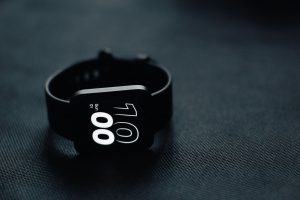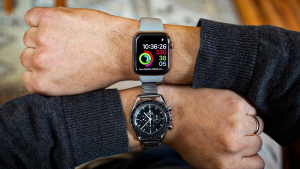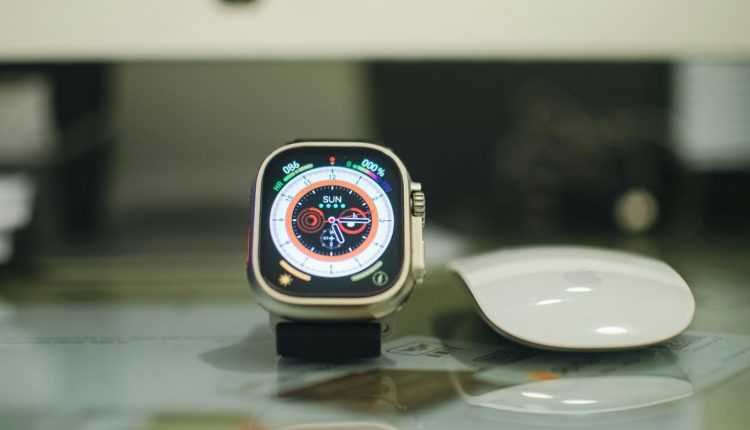Smartwatches vs. Traditional Watches: The Ultimate Showdown of Timekeepers
Modern Tech Meets Timeless Elegance
Hey there, time enthusiasts! If you’re anything like me, you’ve probably had a watch or two in your life—maybe even a collection. With the rise of smartwatches, it seems like we’re in a never-ending battle between the old-school charm of traditional timepieces and the futuristic allure of smartwatches. So, grab your favorite beverage, and let’s dive into the showdown of the century: Smartwatches vs. Traditional Watches!
A Brief History of Tick-Tock
Before we get into the nitty-gritty, let’s take a stroll down memory lane. Traditional watches have been around for centuries, evolving from ancient timekeeping devices to the stylish wristwatches we know today. The journey begins with the pocket watch, an elegant accessory that was all the rage from the 16th century onward. These devices were marvels of precision engineering, often crafted with intricate designs and luxurious materials. Imagine your great-great-grandpa pulling out a shiny pocket watch to check the time—pretty cool, right?
Fast forward to the 20th century, and we saw the quartz revolution shake things up. Quartz watches, with their unparalleled accuracy and affordability, were a game-changer. Brands like Rolex and Omega became household names, and watches went from mere time-tellers to symbols of status and style. The introduction of quartz technology in the 1960s and 70s marked a significant shift, with quartz crystals ensuring that watches kept time more accurately than ever before.
Enter the 21st century, and the smartwatch made its debut. Fueled by advancements in technology and a desire for multifunctional devices, smartwatches began to blur the lines between traditional timekeeping and tech wizardry. Companies like Apple and Samsung stepped into the ring, offering devices that combined the classic concept of a watch with cutting-edge technology. These new gadgets promise to revolutionize how we interact with time and our surroundings.
Functionality: What Can They Do?
Let’s talk about what makes these timekeepers tick. Traditional watches are all about elegance and precision. They’re crafted with meticulous care, often boasting features like chronographs (for timing events), perpetual calendars (because who wants to reset the date?), and even moon phases (for the astrologically inclined). Some traditional watches come with intricate complications, such as tourbillons and minute repeaters, that not only serve a practical purpose but also showcase exceptional craftsmanship.
But smartwatches? Oh boy, they’re a whole different ballgame. They’re like mini-computers strapped to your wrist. Not only do they tell time, but they also track your fitness, give you notifications, and even let you control your music. Imagine having a personal assistant, a fitness coach, and a mini smartphone all in one device. Smartwatches come with features like GPS navigation, heart rate monitors, sleep tracking, and even the ability to make phone calls or send messages. Plus, they offer a vast array of apps—from meditation guides to social media platforms—making them incredibly versatile.

For the health-conscious, smartwatches have become invaluable tools. They can monitor everything from your daily steps and calorie burn to your sleep quality and stress levels. Advanced models even offer ECG and blood oxygen monitoring, providing a comprehensive view of your overall health. Traditional watches, while often beautiful and precise, typically lack these high-tech health features.
Design and Aesthetics: Classic vs. Modern
When it comes to design, traditional watches are like classic cars—timeless and elegant. They come in a range of styles, from minimalist designs to intricate dials with multiple complications. Think sleek metal bands, leather straps, and intricate faces with Roman numerals or ornate details. Traditional watches are often made with materials like gold, silver, and high-grade leather, emphasizing luxury and craftsmanship.
Wearing a traditional watch can be like stepping into a scene from a vintage movie. It’s not just about telling time; it’s about making a statement. Brands like Patek Philippe, Audemars Piguet, and Cartier are known for their exquisite designs and attention to detail. Each piece is often a work of art, showcasing centuries of horological expertise.
On the flip side, smartwatches are all about modern flair and versatility. They come with customizable watch faces that can change based on your mood, outfit, or preferences. You can swap out bands like you change your socks—metal, silicone, leather, you name it. The touchscreens on smartwatches look like they belong in a sci-fi film, and they offer endless customization options, from digital watch faces to interactive widgets.
Smartwatches also cater to a range of aesthetics, from sleek and sporty to elegant and professional. Companies like Apple and Garmin offer a variety of designs that can fit seamlessly into both casual and formal settings. And let’s not forget about the growing trend of luxury smartwatches, which combine high-end materials with cutting-edge technology.
User Experience: The Daily Grind
Here’s where the rubber meets the road—or should I say, where the watch meets the wrist? Traditional watches are built to last. They’re durable, often becoming family heirlooms passed down through generations. Mechanical watches, in particular, are known for their longevity and the craftsmanship that goes into making them. They don’t need charging (unless you’re rocking a battery-powered quartz watch, but that’s another story), and they keep on ticking through the years. With proper care, a traditional watch can remain a reliable and stylish accessory for decades.
Smartwatches, however, are all about convenience and integration. They sync with your phone, give you notifications, and keep track of your daily activities. They’re like having a personal assistant on your wrist, alerting you to messages, reminders, and updates in real-time. They can even help you stay on top of your fitness goals with built-in workout tracking and health monitoring.
However, smartwatches come with their own set of challenges. They need regular charging—typically every one to two days—so you’ll need to remember to plug them in. Battery life can be a concern, especially with high-tech features turned on. Plus, while smartwatches offer incredible functionality, they can sometimes feel overwhelming with constant notifications and app updates.
Market Trends: What’s Hot?
So, where do these timepieces stand in the market today? Traditional watches have a loyal following and occupy a niche in the luxury and collector markets. They’re often seen as status symbols and investments, with certain models appreciating in value over time. Brands like Rolex, Omega, and TAG Heuer continue to dominate the luxury watch market, appealing to enthusiasts and collectors alike.
The market for traditional watches has remained strong, with new models and limited editions frequently being released. Despite the rise of smartwatches, traditional watches continue to attract buyers who value craftsmanship, heritage, and timeless design. Watch enthusiasts often view traditional watches as more than just timekeepers; they’re pieces of art and history.
Smartwatches, on the other hand, are booming. They’re quickly becoming must-have gadgets for tech lovers and fitness enthusiasts. The market is flooded with options from various brands, each offering unique features and designs. Companies like Apple, Samsung, Garmin, and Fitbit are leading the charge, with new models frequently hitting the shelves.
The smartwatch market is characterized by rapid innovation and competition. Each new release brings improvements in features, design, and performance. Smartwatches are becoming increasingly accessible, with models available at a range of price points to suit different budgets. As technology continues to evolve, smartwatches are likely to become even more integrated into our daily lives.

The Future: What Lies Ahead?
What does the future hold for these timepieces? Traditional watches aren’t going anywhere. In fact, they’re poised to adapt and evolve with the times. Some brands are incorporating more modern technology into their classic designs, creating hybrid watches that blend analog elegance with digital features. These hybrids offer the best of both worlds—classic aesthetics with a touch of modern convenience.
Traditional watchmakers are also focusing on preserving their craftsmanship and heritage. As technology advances, there’s a growing interest in how traditional skills can coexist with modern innovations. Expect to see continued innovation in materials, design, and mechanical movements, ensuring that traditional watches remain relevant and cherished.
Smartwatches, however, are on an exciting trajectory. Expect more advanced health features, like improved stress monitoring, blood glucose tracking, and enhanced sleep analysis. The integration of AI and augmented reality could offer even more personalized and immersive experiences. Smartwatches may also become more autonomous, with greater emphasis on standalone functionality without the need for constant phone connectivity.
Privacy and data security will be key considerations as smartwatches become more integrated into our lives. Ensuring that personal health and usage data is protected will be crucial as technology advances. Additionally, smartwatches may face challenges related to battery life, durability, and the balance between functionality and user experience.
The Final Tick
So, there you have it—a comprehensive look at the age-old debate between smartwatches and traditional watches. Both have their charm and unique offerings. Traditional watches are the embodiment of craftsmanship and history, while smartwatches are the epitome of modern convenience and tech innovation.
In the end, whether you’re drawn to the classic allure of a Rolex or the high-tech features of an Apple Watch, it’s all about what suits your lifestyle and personal style. Traditional watches offer a timeless connection to history and craftsmanship, while smartwatches provide a glimpse into the future of technology and convenience.
So, whether you’re a fan of ticking elegance or tech-savvy timekeeping, there’s a perfect watch out there for you. Keep ticking and stay stylish, no matter which side of the debate you fall on!

